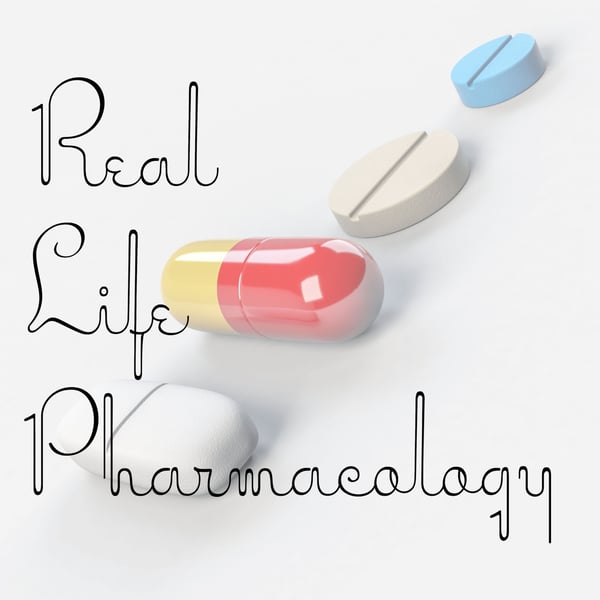Diphenhydramine (Benadryl) Pharmacology
Real Life Pharmacology - Pharmacology Education for Health Care Professionals
Eric Christianson, PharmD; Pharmacology Expert and Clinical Pharmacist
5 • 716 Ratings
🗓️ 10 December 2020
⏱️ 13 minutes
🧾️ Download transcript
Summary
When using medications like diphenhydramine, be sure to watch for side effects like dry eyes, dry mouth, constipation, urinary retention, and CNS changes.
Sedation is a primary effect of diphenhydramine. It can be advantageous in certain situations, and detrimental in others.
Drugs like donepezil, memantine, laxatives, tamsulosin, and artificial tears can be indicators of anticholinergic side effects from diphenhydramine.
Transcript
Click on a timestamp to play from that location
| 0:00.0 | Hey all, welcome back to the Real Life Pharmacology podcast. I am your host, pharmacist Eric Christensen, |
| 0:05.8 | and I thank you so much for listening today. Definitely go subscribe at real life pharmacology.com. |
| 0:12.2 | Get your free top 200 study guide on the top 200 drugs there. Great little resource if you're in pharmacology classes, |
| 0:22.8 | if you're in clinical practice, |
| 0:24.1 | just looking for a little refresher. |
| 0:26.1 | Free 31-page PDF on the things that I see, |
| 0:30.1 | as well as those things that are highly testable |
| 0:33.3 | for all of you going through board exams and things like that. |
| 0:37.4 | So with that, let's get in to the drug of the day today. |
| 0:41.6 | We are talking about diphenhydramine, |
| 0:45.1 | which the most commonly used brand name is Benadryl. |
| 0:50.2 | This is a first-generation antihistamine. |
| 0:53.9 | So long, long time ago, many, many years ago, |
| 0:57.9 | the majority of people would use diphenhydramine for things like seasonal allergies. |
| 1:05.8 | Now we've since had the advent of second-generation antihistamines, and the big difference there was sedation. |
| 1:13.7 | Diphonhydramine is very sedating compared to a drug like Liradidine, for example, which is a second-generation |
| 1:23.1 | antihistamine. So while diphynhydramine has has, you know, fallen on the favor and you don't see it |
| 1:30.7 | used terribly often for, like, seasonal allergies and allergic rhinitis, I definitely still see |
| 1:38.0 | this medication used a lot. And I would say, uh, the number one thing I see it used for is sleep and it's sedative properties. |
| 1:48.8 | It seems like a lot of the geriatric patients I work with use this stuff like candy to help them |
| 1:55.7 | go to sleep. And there's a lot of reasons why that shouldn't be done or we should do everything in our power to avoid using this medication for sleep. |
| 2:05.4 | And I'll talk about some of those. |
... |
Please login to see the full transcript.
Disclaimer: The podcast and artwork embedded on this page are from Eric Christianson, PharmD; Pharmacology Expert and Clinical Pharmacist, and are the property of its owner and not affiliated with or endorsed by Tapesearch.
Generated transcripts are the property of Eric Christianson, PharmD; Pharmacology Expert and Clinical Pharmacist and are distributed freely under the Fair Use doctrine. Transcripts generated by Tapesearch are not guaranteed to be accurate.
Copyright © Tapesearch 2025.

